Ski resorts are extremely popular at Christmas time. Even those who have never tried skiing or snowboarding go there. Nowadays, it is not just a sport, but a way of life – partying, dating. That is why many are unprepared for what awaits them in the mountains – and, as a result, they often risk their health. Read our article to find out how to protect yourself and give first aid in an emergency.
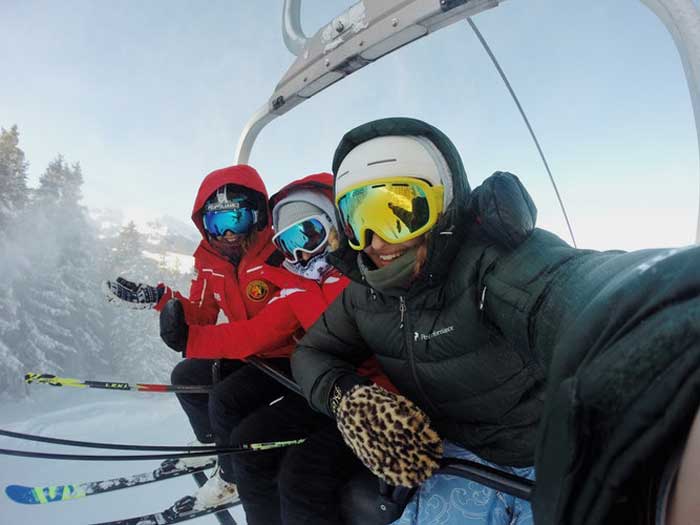 Injuries
Injuries
Despite the fact that skiing is one of the most extreme sports, there is a low risk of getting a lethal injury at a skiing resort. It does not exceed the probability of getting injured in a car accident, for example. However, ankle and shin fractures, sprains, or ligament ruptures are still very common on ski slopes.
In case of an injury, first of all, evaluate your state. Do not try to stand up sharply, and test your body parts one by one. Try to hold the damaged part of the body steady. You can try to apply an elastic bandage gently. It is not recommended to warm the sore spot, since the nature of the damage is still unknown, and this is strictly prohibited in case of fractures and sprains.
If you are surrounded by people, be sure to contact them for help and get them to escort you to the medical center. If you are going to a secluded place, it is important that you warn your friends/relatives or on-duty instructors/rescuers in advance about where you are going and when you expect to return. This becomes vital in places with no cellular connection when you cannot contact the rescue service, which is not uncommon in mountainous areas.
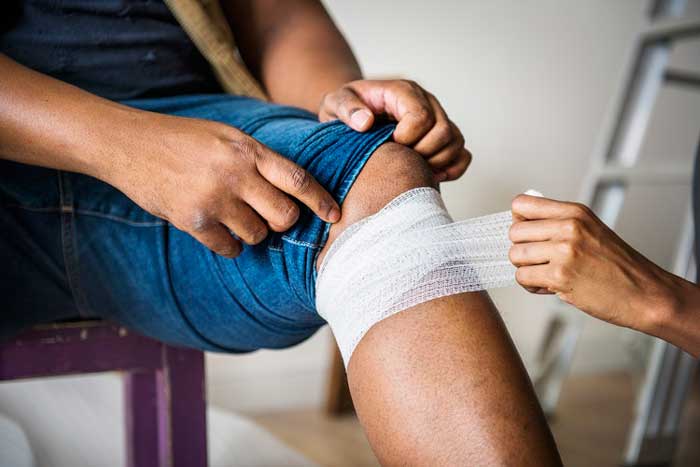
At the same time, we understand that it is necessary to see a doctor since many injuries have a delayed effect. For example, some types of post-traumatic hemorrhages can mature for several days before damaging the brain, or an improperly consolidated fracture of the wrist can disrupt the function of major nerves or blood vessels, which in turn disrupts hand sensitivity and movement or leads to edema and stagnation. In this case, you will not be able to avoid seeing an orthopedist, a surgeon or a neurologist.
Observe basic security measures in order not to spoil your vacation. Assess the difficulty level of the track before you go out on it. Choose the time with the lowest activity.
The risk of injury depends on the level of a skier’s training and professionalism. If you are not a professional athlete or are hardly able to stand on skis, choose a track with a simple descent or use the services of an instructor. You can master the technique of a proper fall, which is very important for everyone. Here are a few basic rules: when falling, group and tense all your muscles, bend your legs at the knees as much as possible, press your chin to your chest to protect your head from being hit.
Skiing equipment
Clothes play one of the key roles in body thermoregulation. They not only provide comfort but also help to avoid overcooling or overheating on the slope. It is important that the clothes should match the weather, as well as elementary safety rules. This is especially true for children. It is better to exclude all the strings and laces, scarves, jewelry, and loose hair, which can be easily caught.
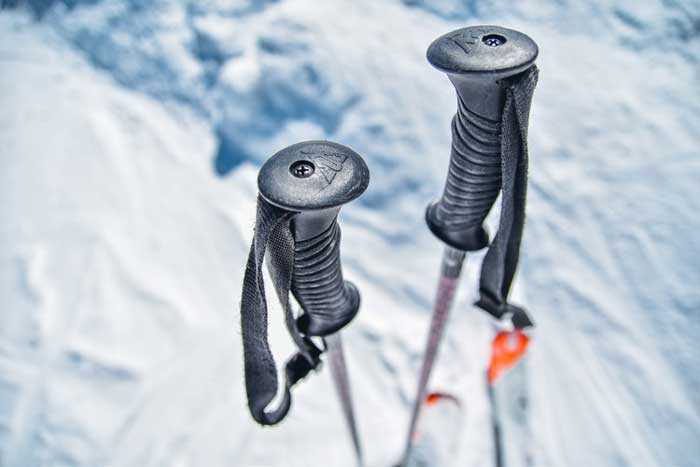
Choosing skiing outfits, use the principle of layering. One of the layers is thermal underwear. Chosen properly, it will preserve the freedom of movement, and, perhaps most importantly, it will correctly regulate heat exchange. Thermal underwear should fit snugly to the body to ensure proper thermoregulation, and stimulate blood circulation without squeezing the muscles or restricting your movements.
The correct choice of thermal underwear will help avoid not only hypothermia and overheating, but also blisters and intertrigo on the skin. If the latter appears, it will be better to contact a dermatologist in a timely manner. Besides, a reasonable approach to the choice of thermal underwear will protect you from the appearance of thrush in women and balanoposthitis in men, which is caused by prolonged wear of synthetic and tight-fitting materials.
Burns and frostbite
The action of ultraviolet rays in bright sunlight is enhanced as you climb higher in the mountains. Eye burn may occur. Approximately 4–6 hours after uninterrupted exposure to the open sun without goggles, a person may experience eye pain, cramps, redness, tearing, and sharp vision deterioration.
In order to avoid the harmful effect of sun rays on your eyes, use a skiing mask. It protects the eyes not only from ultraviolet radiation but also from possible physical damage – for example, by tree branches or ice particles – as well as from the wind.
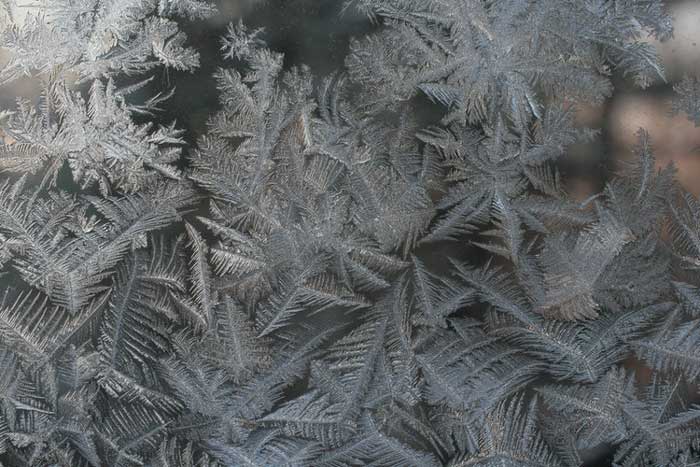
Lip balm or a hygienic lipstick should be applied every 2 hours. Dry your lips after drinking and never lick them while walking or skiing. Moisture on the lips acts as a micro-lens, which enhances the action of sunlight, and consequently, increases the risk of damage.
Go out at the optimum temperature. Up to – 10 with moderate humidity and no wind are the most suitable climatic conditions. If the temperature is lower, and the weather is windy, there is a risk of frostbite. Frostbite usually affects protruding or exposed areas of the body and extremities – fingers or toes, face, nose, and ears. You may experience limb numbness without any signs of pain. In case of such injuries, it is best to contact the surgeon immediately.
Muscle loading
Skiing and snowboarding equipment is heavy enough, and you need to get used to carrying it. In addition, the skier’s legs are subject to severe stress. Therefore, it is more likely that at the end of the first day of skiing you will hardly be able to move your legs. If you already have problems with the musculoskeletal system (spine, joints, ligaments), it will be better to discuss it with an orthopedic surgeon/rheumatologist/neurologist beforehand, if such loads are permissible and how to protect your body – for example, you can use soft elastic orthoses protecting vulnerable places.
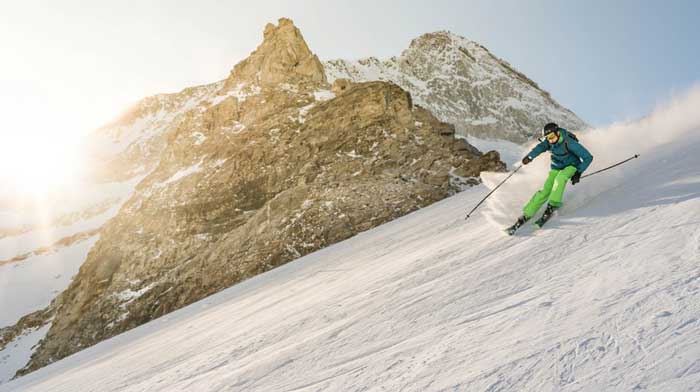
Alcohol
Don’t drink and ski. Even a glass of wine slows down your reaction. At an altitude of two thousand meters, intoxication occurs several times faster. The body feels light and plastic under the influence of alcohol. There is no fear at all, but there is a feeling of freedom, a sensation of speed. Statistics show that lots of accidents at ski resorts occurred in a state of intoxication. Weakened attention and an overestimation of your abilities are not the only problems. Drinkers are also at risk of hypothermia because a person under the influence of alcohol does not receive body signals about cold, fatigue and danger.










